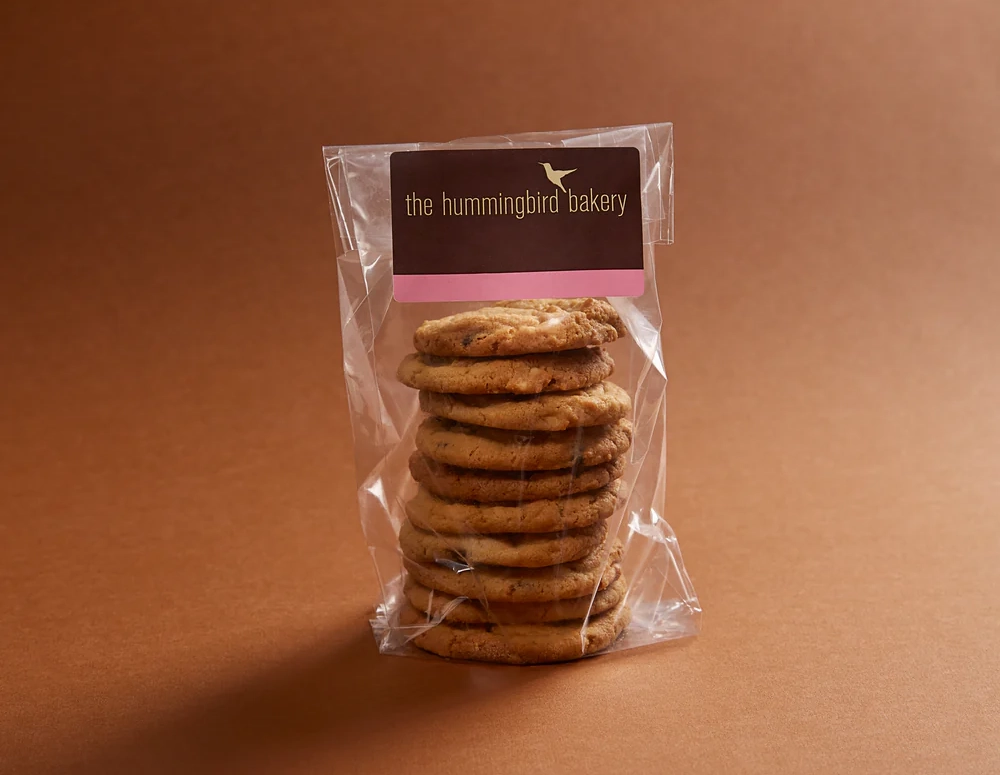
ANY AMERICAN WILL TELL YOU THAT COOKIE-MAKING IS AN ART IN ITSELF. WE ASKED OUR BAKERS WHAT THEY THINK MAKES THE PERFECT COOKIE AND HOW YOU CAN BAKE A WINNING BATCH EVERY TIME.
If you’ve ever wondered why some cookies end up different, even when baking a recipe you’ve tried before, that’s because cookies are a great example of why baking is a science. It’s a matter of variables.
Change any of the ingredients or method and you may end up with a cookie that’s flatter, rounder, plumper, crisper, chewier or browner than the last batch.
Classic American cookies tend to be much bigger, chewier and softer than their biscuity British counterparts, but it’s all down to preference.
Most people know what they like when it comes to cookies, whether that’s a chewy centre or a golden brown top, and it’s useful to know what steps you can take when baking to get the desired cookie result!

Eggs
For a chewy cookie, look for a recipe with plenty of egg in the dough. Chilling the dough before baking will also make the cookie chewier. Read our Ingredient Guide on Eggs for more egg-cellent advice.
Sugar
Brown sugar, rather than white caster sugar, adds a caramel flavour and colour to your bakes, so recipes with some brown sugar added will give a more golden brown cookie with a sugary crisp top. Using only white caster sugar will result in a softer, flatter cookie. Darker muscovado sugars and molasses both give a really deep caramel flavour and colour and will make the cookie soft. Using liquid sugars, like maple syrup, will also make for a softer cookie and will impart extra flavour. Find out how the sweet stuff affects your bakes in our Ingredient Guide on Sugar.
Flour
We use mostly plain flour in our cookies, which is easy for home bakers to get their hands on, but it’s also possible to use mixtures of different flours to get a more cake-like texture, e.g. by adding cake flour or strong bread flour into the mixture. This will make a bouncier, cakier cookie that will turn out much more domed – think almost like a cookie crossed with a scone. A word of caution: too much flour and your cookies may end up dry. Get to grips with the basics in our Ingredient Guide on Flour.
Butter
Creaming together the butter and the sugar is an important step and is the point in the cookie-making process where you get to add air to your mixture. This helps the cookies to rise in the oven. This step should take around 5 minutes, so don’t be tempted to switch off your mixer after two minutes or your cookies will turn out heavier.
Raising agents
Some of our cookie recipes call for baking powder and some call for bicarbonate of soda. Baking powder gives a less heavy texture and will make the cookies puff up more like a cake, compared to bicarbonate of soda. To find out how raising agents work, read our blog: Baking Guide to Raising Agents.
Temperature
Chilling your cookie dough beforehand will stop the dough spreading out as quickly on the tray when baked, so if you like a thicker or thinner cookie, bear this in mind. The general rule is: chilled dough for thick cookies, room temperature dough for thinner cookies. Using room temperature ingredients (such as butter) will also make the cookies melt quicker and bake thinner than if it comes straight from the fridge.
Rolling out
Shaping your cookies is all about presentation. If you want to get hands on and messy, breaking off a piece of dough and rolling it into a ball will give you a more rustic, homemade shape. This is lots of fun to do and if you have little helpers in the kitchen, give them a go at rolling out the dough in their palms. For uniformity, you can use a small food portioner to scoop out equal amounts of dough, providing the dough is soft enough to scoop in the first place. Alternatively, rolling your cookie dough into a sausage-shape and slicing will give you perfect rounds for that shop-bought look but with a homemade taste!
Birthday Cake Cookies Video
For a perfect cookie every time, these vanilla-filled Birthday Cake Cookies from our Life is Sweet cookbook will get the party started:
Recipe taken from Life is Sweet. Start your American baking adventure and order your copy here. For the full recipe and method read our Birthday Cake Cookie blog.
A few final cookie making tips…

And of course, don't forget to eat your cookies *immediately*... that’s our only rule!
Happy baking! x
Follow us on
 hummingbbakery
hummingbbakery





